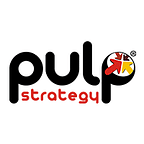Planning steps for creating perfect Content
Content planning is a must to make flow in the work you are doing. We make a plan. We break it down into goals and tasks so that we can achieve them all in order, but then something comes up — there’s not enough time or resources allocated towards this desired outcome! The decision made here doesn’t fit what needs doing over there-and vice versa for every other category on our list too.
Planning is not about the plan. Planning, in its most valuable form as a process for decision-making and perspective-taking on your end goals, allows you to make trades offs based upon what will be needed when it comes time to actually achieve those things that have been set out ahead of schedule by planning ahead!
So from this point forward consider every day spent working or playing with content creation an investment; one which may never come back fully repaid but always pays twice over through increased understanding learned during each new learning experience
The real purpose of planning is to identify which decisions will be the right ones to best execute the content that feeds the marketing strategy. This can be done through a five-step strategic process.
Here is the five-step strategic process:
1. Development — Always think about the bigger stories you want to tell. Storytelling is all about telling those compelling tales and their outcome — be it an idea or invention, which results in something new being created from what was before it. It’s time for us here as entrepreneurs within this industry that have been around since forever but never seems like enough anymore because there is always change happening with society itself; we need more than just basic information passed down through blog posts.
2. Creation & Production — The planning process for content creation and production begins with creating a calendar. Assign resources to complete the work in this agenda including yourself, other team members, or contractors if necessary to ensure that deadlines are met on time accordingly. The most important step when managing any type of project is setting up an upfront schedule so everyone knows what needs to be completed by who and when it should be finished.
3. Merchandise — Now, the plan needs to detail how the content will be shelved and communicated internally within your business based on what (1) could be used, (2), should I use it? And thirdly if there’s anything available for me at this time. This is a merchandising strategy of sorts with regards as well.
4. Activation — We all know the importance of planning for our content. But, what about activating? It’s just as important! You can have a process set up to help with this too- everything doesn’t need its own special treatment (though some things might). So start thinking through how you want your team or freelance contributors involved in developing their work before they pitch us something new and different.
Measurement — This is where you need to think about who will be tracking what, and why. Who has the responsibility for getting these numbers? Who needs them in order to meet their goals or milestones with the project — do we have enough data on hand right now that’s accurate enough before this becomes an issue down the line if things go wrong. This step also includes determining how many people are going into each decision-making process related to metrics: whether it’s something as simple as deciding which posts get curated Facebook groups instead of just appearing organically; doing some prep work ahead so all our social media channels.
